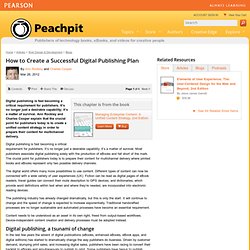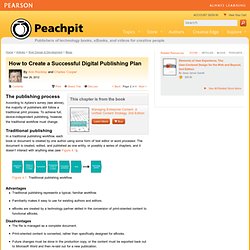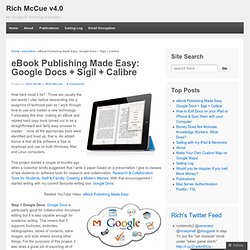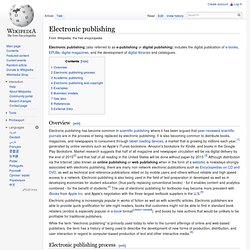

How to Create a Successful Digital Publishing Plan. This chapter is from the book Digital publishing is fast becoming a critical requirement for publishers.

It’s no longer just a desirable capability; it’s a matter of survival. Ann Rockley and Charles Cooper explain that the crucial point for publishers today is to create a unified content strategy in order to prepare their content for multichannel delivery. Digital publishing is fast becoming a critical requirement for publishers. It’s no longer just a desirable capability; it’s a matter of survival. The digital world offers many more possibilities to use content. The publishing industry has already changed dramatically, but this is only the start. Content needs to be understood as an asset in its own right, freed from output-based workflows. In the last few years the advent of digital publications (eBooks, enhanced eBooks, eBook apps, and digital editions) has started to dramatically change the way publishers do business.
How to Create a Successful Digital Publishing Plan. According to Aptara’s survey (see above), the majority of publishers still follow a traditional print process.

To achieve full, device-independent publishing, however, the traditional workflow must change. Traditional publishing Advantages Traditional publishing represents a typical, familiar workflow.Familiarity makes it easy to use for existing authors and editors.eBooks are created by a technology partner skilled in the conversion of print-oriented content to functional eBooks. Disadvantages The file is managed as a complete document.Print-oriented content is converted, rather than specifically designed for eBooks.Future changes must be done in the production copy, or the content must be exported back out to Microsoft Word and then re-laid out for a new publication.
Note that in this scenario the creation of successful eBooks depends on the publisher’s understanding of the nature of the eBook they want to produce and the clear communication of those requirements to the technology partner. eBook Publishing Made Easy: Google Docs + Sigil + Calibre. How hard could it be?

Those are usually the last words I utter before descending into a quagmire of technical pain as I work through how to use and master a new technology. Fortunately this time, making an eBook and related hard copy book turned out to be a straightforward and fairly easy process to master… once all the appropriate tools were identified and lined up, that is. An added bonus is that all the software is free to download and use on both Windows, Mac and Linux computers. This project started a couple of months ago when a coworker kindly suggested that I write a paper based on a presentation I give to classes of law students on software tools for research and collaboration: Research & Collaboration Tools for Students, Staff & Faculty: Creating a Modern Memex. With that encouragement I started writing with my current favourite writing tool, Google Docs.
Related YouTube Video: eBook Publishing Made Easy You’re done! Related Downloads: Like this: 1. Introduction and Overview – Digital Publishing Australia. RAAK-MKB project by Institute of Network Cultures, Hogeschool van Amsterdam. Best_Practices_Digital_Publishing_Strategy.pdf. Electronic publishing. Electronic publishing (also referred to as e-publishing or digital publishing) includes the digital publication of e-books, EPUBs, digital magazines, and the development of digital libraries and catalogues.

Overview[edit] Electronic publishing has become common in scientific publishing where it has been argued that peer-reviewed scientific journals are in the process of being replaced by electronic publishing. It is also becoming common to distribute books, magazines, and newspapers to consumers through tablet reading devices, a market that is growing by millions each year,[1] generated by online vendors such as Apple's iTunes bookstore, Amazon's bookstore for Kindle, and books in the Google Play Bookstore. Electronic publishing is increasingly popular in works of fiction as well as with scientific articles. Electronic publishing process[edit] Distributing content electronically as apps has become popular due to the rapid consumer adoption of smartphones and tablets.
Examples[edit]